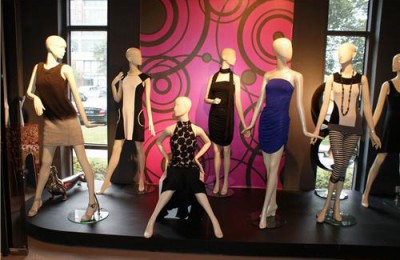High temperature, high temperature, high temperature! Recently, the editor’s circle of friends has been flooded with “high temperatures”, and all kinds of heat have made the editor charred on the outside and tender on the inside.
Some time ago, the textile market was as hot as this hot weather. Bulk textile raw materials began to surge. PTA took the lead in rising for a week. Polyester filament kept pace with the daily price, and was closed from time to time. In addition, nylon, viscose, polyester staple fiber, island silk and other raw materials are not stopping; the fabric market is also in full swing. Conventional chemical fiber fabrics, including imitation silk, polyester taffeta, and pongee, have gone out of the way of getting goods in cash and waiting in line. As a result, prices have risen by 5 cents or even 1 yuan a month, a rare price trend in several years.
However, after entering mid-July, the previously hot market began to show signs of “cooling down”. Many textile companies began to suspend production, limit production, and take holidays during this hot summer.
High temperature orange warning: production suspension, semi-suspended production, factory shutdown status…
After successfully collecting 10 high-temperature orange warnings, the most unbearable high-temperature red warning has come. After the hottest mode of the year started, textile printing and dyeing factories in Jiangsu and Zhejiang also began to limit and suspend production. operate. Mr. Qian of a weaving factory in Shengze District said that the high temperature and climate this year are particularly obvious, resulting in production restrictions being more severe than in previous years.
Affected by the hot weather, many production workers cannot bear it and suffer from heatstroke frequently, which leads to accelerated factory shutdowns. “Currently, we have a lot of orders on hand, but the temperature is too high and the efficiency of the workers cannot be guaranteed. But now the market atmosphere has also weakened, so we don’t have to be in a hurry to catch up with the goods. We can generally follow the orders. Delivery within the specified time,” Mr. Qian said.
In less than a week, the number of startups in Jiangsu and Zhejiang dropped by nearly 20%
From the weaving side, after entering July, the market began to show signs of weakening, especially in Changxing, Haining and other places. The entire downstream weaving market has no signs of weakness like in June. In the context of weakening market trading atmosphere, difficulty in raising fabric prices, and continued high raw material costs, the enthusiasm of weaving manufacturers for production has dropped significantly. According to statistics, since last weekend, the start-up operation situation in Jiangsu and Zhejiang has undergone major changes.
(The table above is a table of weekly operating rate changes in Jiangsu and Zhejiang regions)
In addition to the impact of high temperature climate, the reason for the accelerated decline in the market’s operating rate this time is also the high price of raw materials. According to statistics, from June to now, the price of polyester filament has increased by about 1,000 yuan, which has made it difficult for gray fabric manufacturers and traders to negotiate the price of new orders. In addition, terminal garment factories and traders have more or less stocked up in the early stage. For these goods, the purchasing enthusiasm is not high, and the market order speed has obviously weakened. In addition, insufficient market orders have led to high gray fabric inventories, which has also inhibited production enthusiasm in some regions. The large inventories of gray fabrics in Changxing and Changshu have led to tight liquidity for some manufacturers, and load reduction has become their first choice.
Sold out in the early stage, sold off recently, Boss Danbu is looking for a way out!
In June, the gallbladder market also experienced a crazy market. In addition to the regular 190T, 210T, and 290T polyester taffeta sold out in the market, some new products such as pinhole retractable gallbladder have also been favored by the market. . It is reported that a Danbu supermarket in Shengze raised prices 8 times in just one month (June), with a cumulative increase of 15%-25%. Many traders began to hoard goods crazily and were ready to give it a go. However, in July, the market began to weaken. The market orders for polyester taffeta below 290T were obviously weakened. After not waiting for the scheduled orders, some fabrics The boss is ready to start selling the spot goods at a reduced price. “It feels like the market is a bit unsaleable now. I’ll sell some goods first to reserve ammunition.” Mr. Zhang sighed.
Nowadays, many cloth bosses have begun to calm down and think about the future. In their opinion, whether the peak season can continue smoothly in the second half of the year depends on the procurement situation of autumn and winter clothing fabrics. Nowadays, low-price competition in the market is still the norm. Coupled with strict inspections by the environmental protection department, textile printing and dyeing enterprises have limited production, and fabric prices are stagnant. Problems that were ignored in the early stage due to the hot market have begun to surface. In the hot summer, textile workers will endure both mental and physical suffering!
</p






